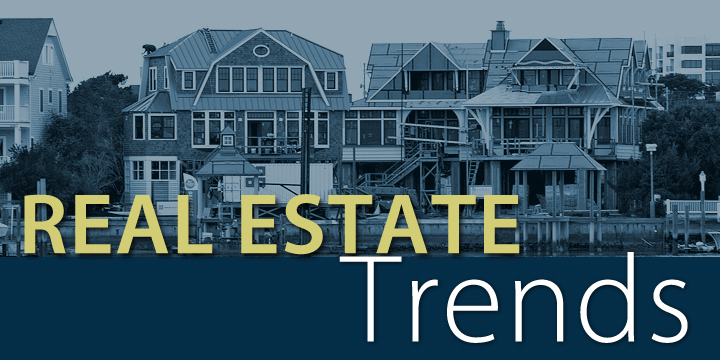Real Estate
6 Real-Estate Trends to Watch in 2020

A surprising twist towards the end of 2019 with the election of Real-Estate magnate Donald Trump as the new president is being predicted to bring some dramatic changes in 2020 for the housing industry. Thanks to the low-interest rates, low gas prices, a healthy increase in the wages, the housing market was a recipient to positive growth. Still, businesses around the world account for unexpected outcomes and keeping that in view, following are some of the key factors to watch out in the real-estate industry in 2020 – don’t get blindsided.
1. Drones are the next big thing!
Commercial use of unmanned aerial vehicles (UAVs), or drones, in 2020 has been cleared for take-off by the Federal Aviation Administration, and the nascent use of drones by the real-estate industry is likely to expand dramatically next year, according to several analysts.
“Location, location, location has now become perspective, perspective, perspective,” said Steve McIrvin, chief executive of Autel Robotics USA, a Bothell, Wash.–based drone manufacturer. “If you have a property [to sell] with more than an acre of land or a unique perspective, it’s a good reason to bring in a drone.”
According to various sources, the use of drones to create those flyovers of properties for real-estate agents began to rise this year, home buyers and sellers will be able to use them as well by next year, as operators will no longer need a commercial pilot’s license to fly, although some flights will need the FAA’s or local tower permission, along with a flight plan filed online. More importantly, this new step is initially aimed for the selling side but experts are predicting its expansion to facilitate the buyer’ as well in the next year.
2. Surban is a new way forward!
Many times, we have heard debates on the Urban vs. Suburban communities and consequences – both have some shortcomings. “Existing suburban neighbourhoods are adding urban amenities so that there’s an environment where people can live, work and play right outside of the core part of the city,” said Peter Burley, a real-estate executive in Oak Park, Ill., an urbanised inner-ring Chicago suburb.
Suburban living is becoming the new lifestyle, as this new avenue is providing the best of both worlds. Experts at Spring Hill Realty nearly 80% of residential growth to occur in suburban communities over the next 10 years — up from 71% from 2012 to 2018 — compared to just 15% for “urban” areas through 2025, which is a lot of positive growth for a relatively new concept of living. Experts further elaborate this concept as “Surban neighbourhoods are designed to be inclusive, rather than exclusive.”
3. Mortgage is now getting more approachable
According to Mortgage Credit Availability Index, it’ easier to get a mortgage at this point in time than any time in the past. The growing financial condition has led to the increased availability of both jumbo and low down-payment loans. Experts are predicting positive things for the expansion of this phase, as according to them “The pendulum has been swinging toward a loosening of the credit box a bit.”
4. Easy Phase of Rent Increments
Rent will always continue to grow, if not at an accelerated pace then; surely it will grow at a much more leisure pace. It is being predicted by the experts at both Spring Hill Rentals and Zillow’s rent forecast that rent will continue to grow at 1.7% next year, which is not inclusive of rents in large metro areas. The modest gains follow years of double-digit growths in many places and reflect inventory finally catching up with demand as builders create new apartment buildings to accommodate the nearly 40 percent of Americans who are choosing to rent rather than buy housing.
5. The Tiny Home Movement
The increased movement of opting for eco-friendly ways to carry on daily life has had a greater impact on the real-estate industry. Smaller homes are the product of several trends during the real estate market, including higher demand for homes close to city centres where space is tight and continued growth in the “tiny home” movement. And more importantly, it is easy to afford a smaller home than to get tangled with a large home, which would end up costing you a lot more.
6. The rise of Millennials
It is being predicted that more millennials -those born between early 1980′ and the late 1990′- are expected to enter this market and buy their first home in 2020.
MarketWatch reports that Many of those buyers have saved enough to go with something more than a condo unit or a starter home. And with the markets performing at a good pace, with low interests, millennials who have paid down their student debt and built up their cash may be in a position to buy more house than real-estate agents might think. More importantly, student debt, which is still seen as one of the top factors that will influence the millennials choice to buy a new house in the coming year. And perhaps also worrisome, the baby boom generation is also deep in debt, with the highest median debt balance of $29,100. And it isn’t just their own debt, according to the National Association of Realtors.





